Edith on landscaping fabric
- 10/09/2019 05:24 AM (update 04/10/2023 11:09 PM)
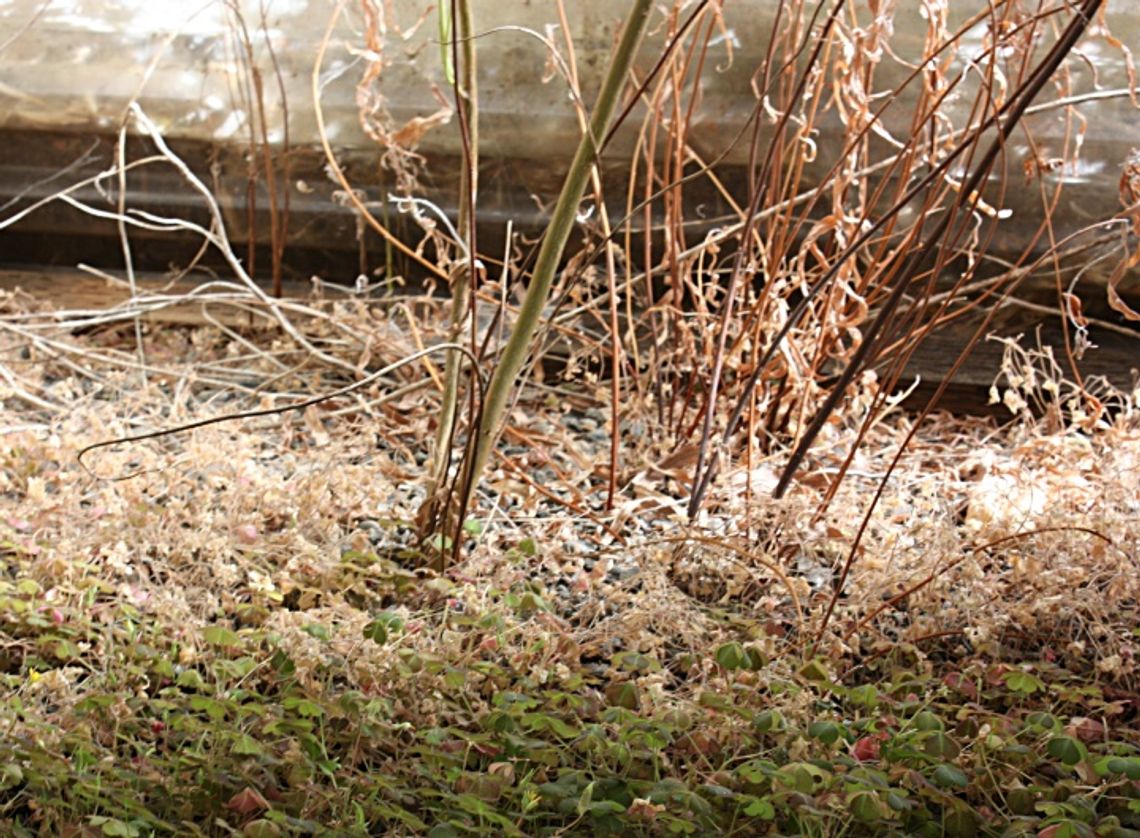
by Edith Isidoro-Mills --
Landscape fabric might seem like a good non-herbicide solution to controlling weeds in your yard but don’t trust it. After several years of apparently good control, you will regret you ever considered landscape fabric to control weeds.
A freshly installed planting with landscape fabric and mulch spread evenly over the fabric looks so nice for a year or two. The plants receive water through a drip system hidden under the landscape fabric. The only plants popping through the fabric are those in intentionally made holes. The neat planting will only last several years before the weeds start popping up through the fabric. Let’s also not forget what happens when the drip system needs maintenance.
I’ve had my own experience with cheap landscape fabric that I could relate but it was not nearly as hard to remove as this Pennsylvania Extension Agent had when he purchased a property he hoped would fulfill his gardening dreams. By the time he acquired the property the fabric under a planting on a slope had already failed. He found fixing the weedy planting with failed landscape fabric tougher than anticipated. It required hiring help and using every sharp tool available to cut up and remove the landscape fabric. Still, his landscape fabric problems are likely to persist for a few years as some of the fabric that would not come up finally loosens up.
Fortunately, the cheap fabric I used was easier to cut up and had already started to rip in many locations. Removing the large weeds that had established through it was not easy. It is true that landscape fabric will keep seeds that are already in the soil from germinating by blocking light but it doesn’t stop the seeds that blow in from the surrounding weed infested locations from germinating in the mulch on the surface. The seeds land on top of the mulch along with blowing dust. Water from storms or nearby sprinklers supply the water needed for seed germination. The roots of newly germinated seeds are tiny and can penetrate even the best quality fabric to find the soil beneath the fabric. If you don’t get these weeds out before they are no longer seedlings, they are difficult to pull out of the fabric.
Landscape fabric is also not very effective at stopping perennial weeds that spread by rhizomes and woody suckering trees and shrubs from poking through the fabric. Removing these weeds through the landscape fabric is nearly impossible.
There are other reasons not to use landscape fabric that have nothing to do with weed control and everything to with soil fertility and structure. To read more about the problems with landscape fabric you can go to Garden Rant a blog authored by a professional horticulturist, Sprigs and Twigs (a professional landscaping firm), and Garden Mentors (a gardening consultant and awarding winning garden designer).
There are better ways to keep the weeds down. Blocking light from getting to seeds is one way but not with landscape fabric. Instead of landscape fabric, spread a three to four inch layer of organic mulch over the ground between established plants. Leave an inch or two of space between the trunks of woody species and mulch to prevent disease problems and pest problems around the base. Maintain mulch in permanent planting by yearly adding another inch of organic mulch. The yearly addition of new mulch maintains the necessary thickness of the mulch layer to keep it effective at controlling weeds. Any weeds that do sprout in this layer of organic mulch are much easier to pull, hoe or dig out. The other benefit to organic mulch is it decomposes near the surface of the soil, adding nutrients and organic matter to the soil.
Never miss a meeting or community event – keep an eye on the community calendar at https://www.thefallonpost.org/events/
If you like what we’re doing, please support our effort to provide local, independent news and contribute to The Fallon Post, your online news source for all things Fallon.

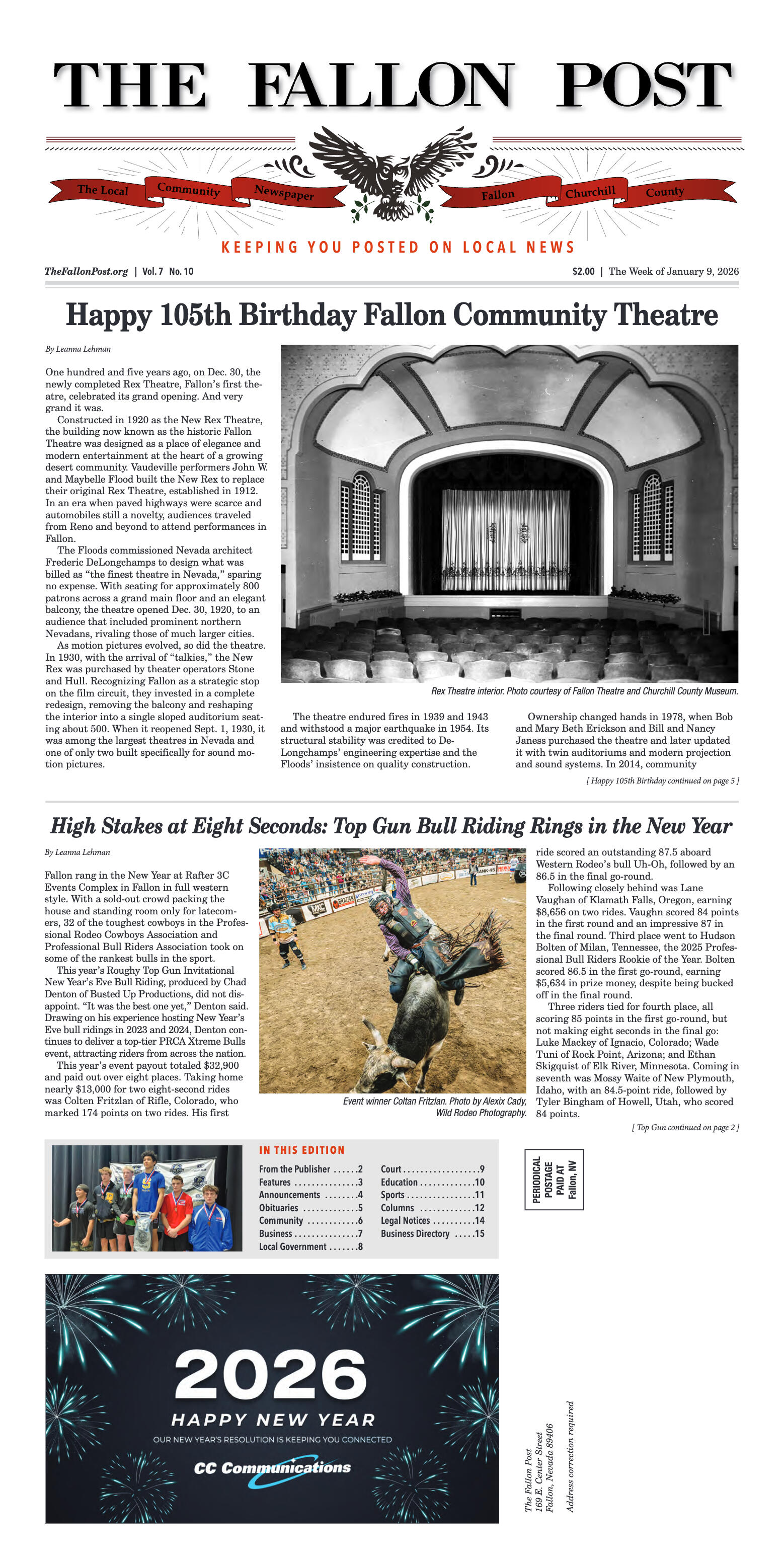
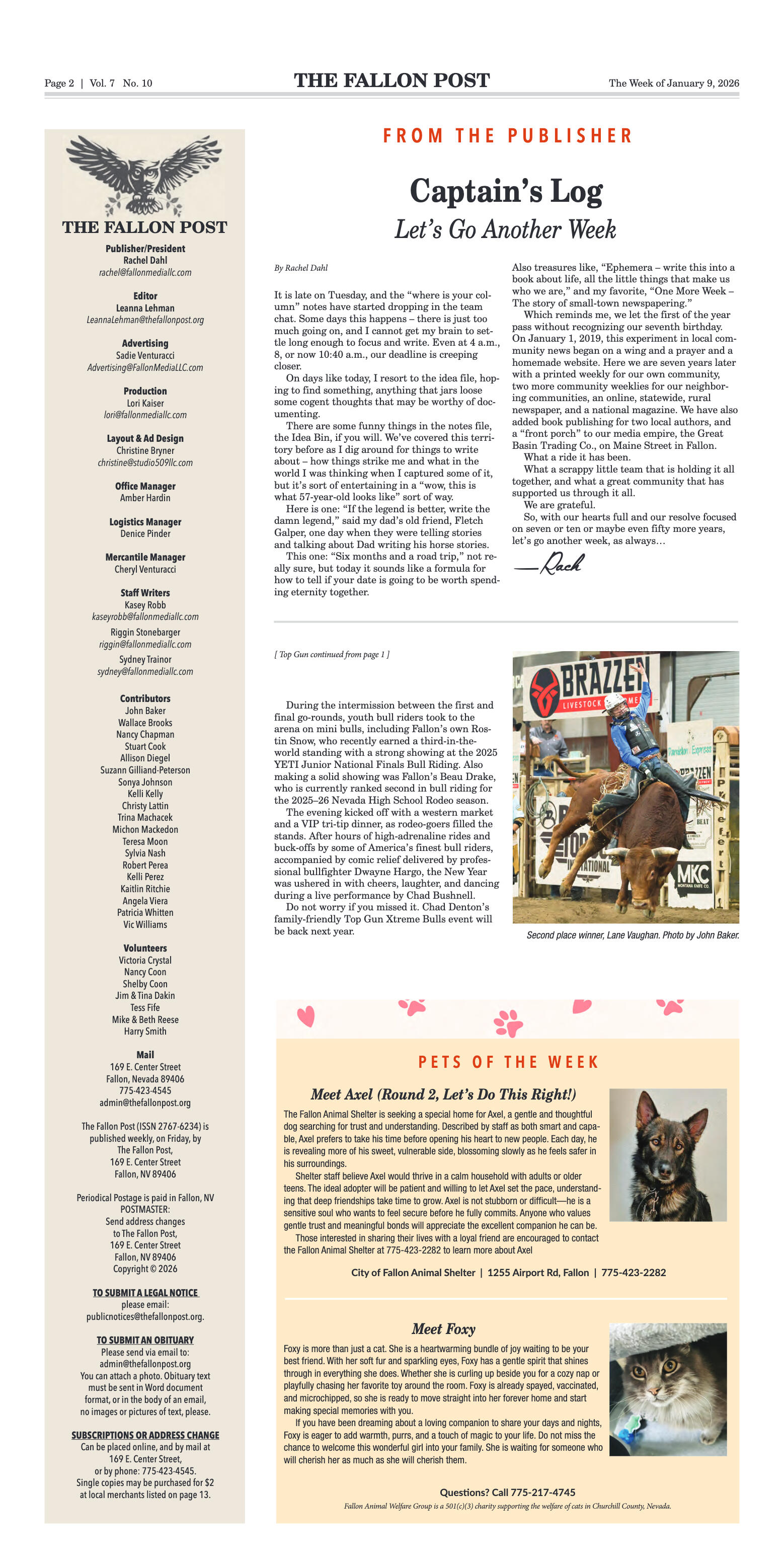


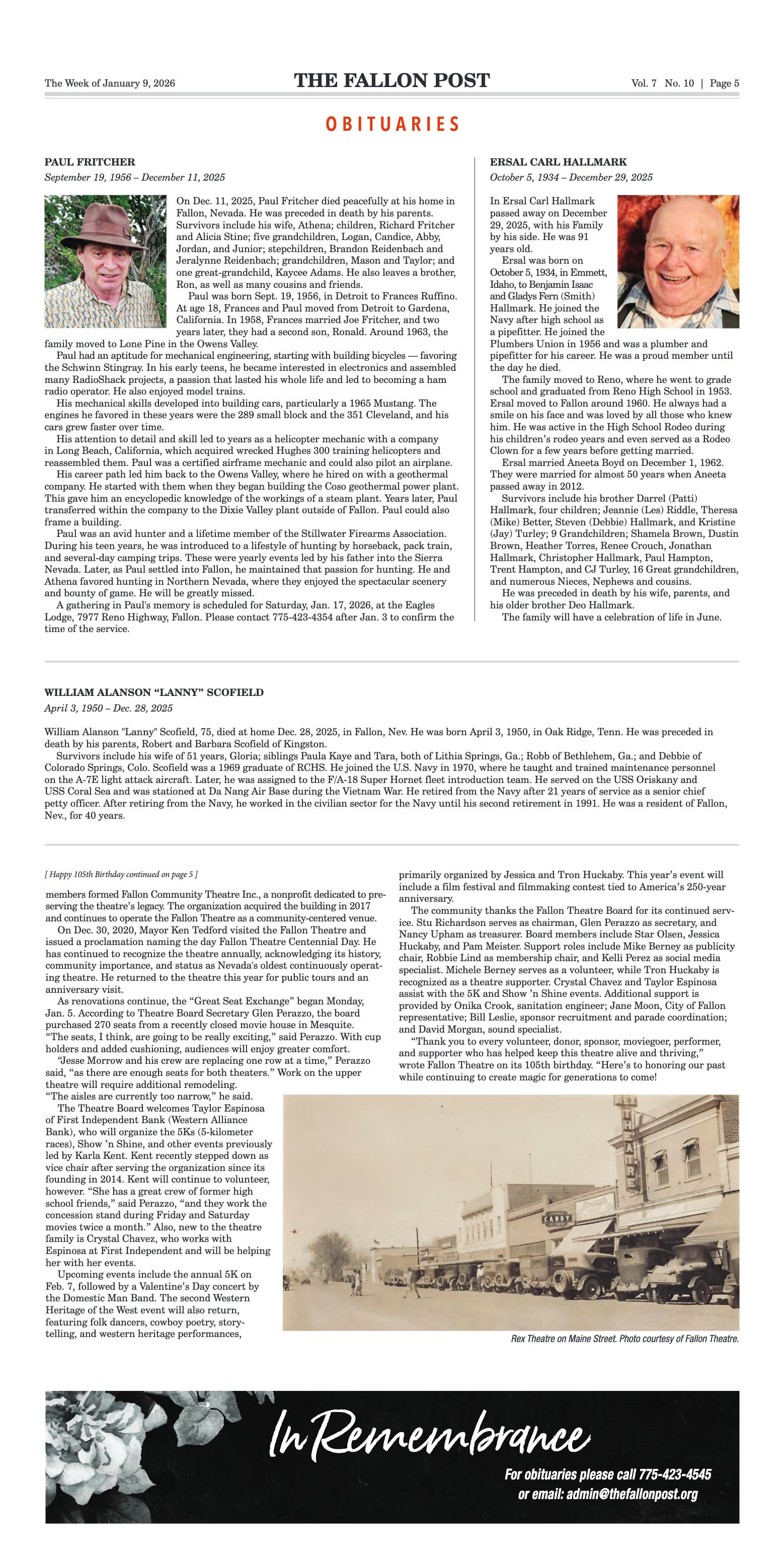

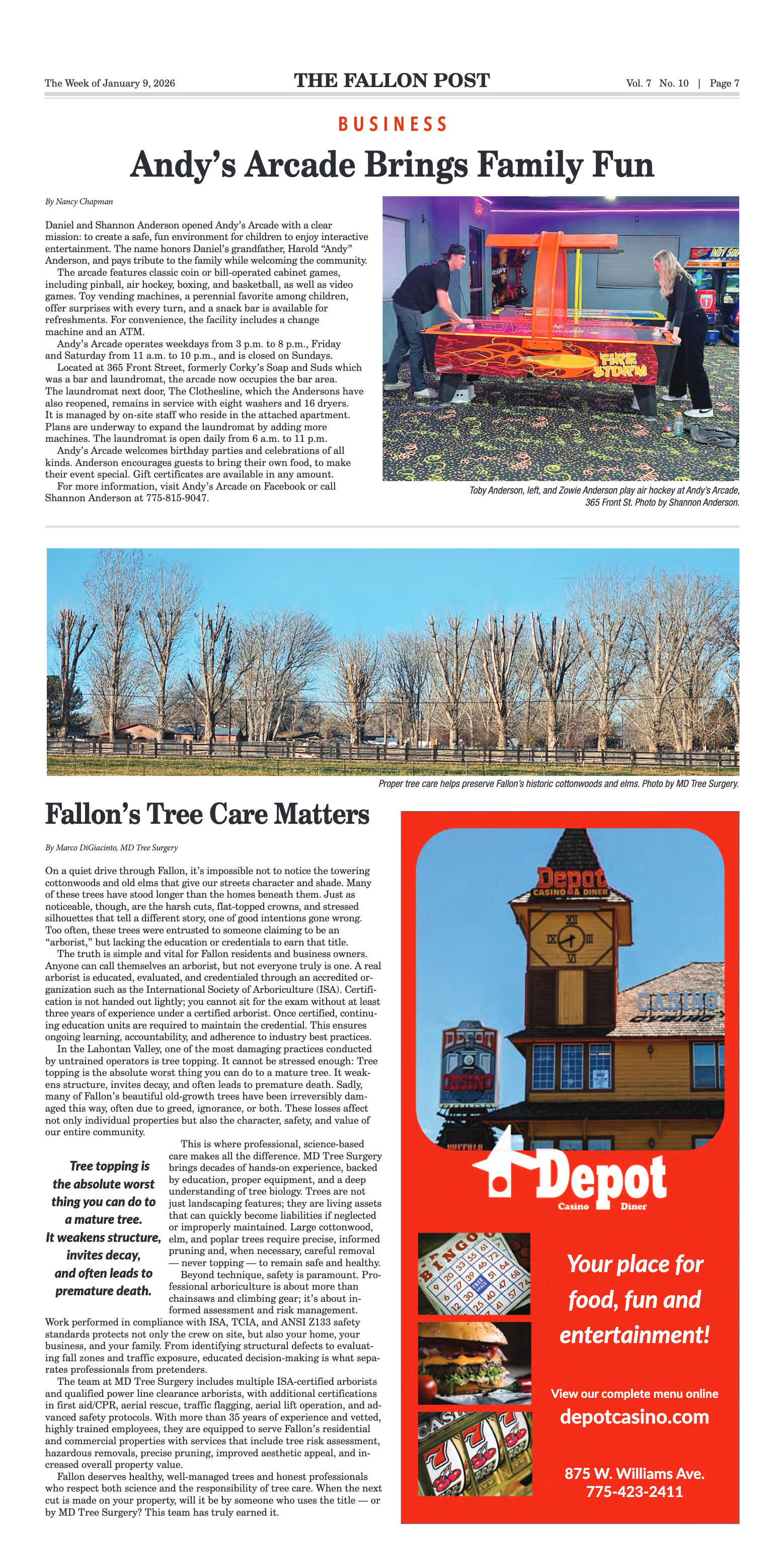
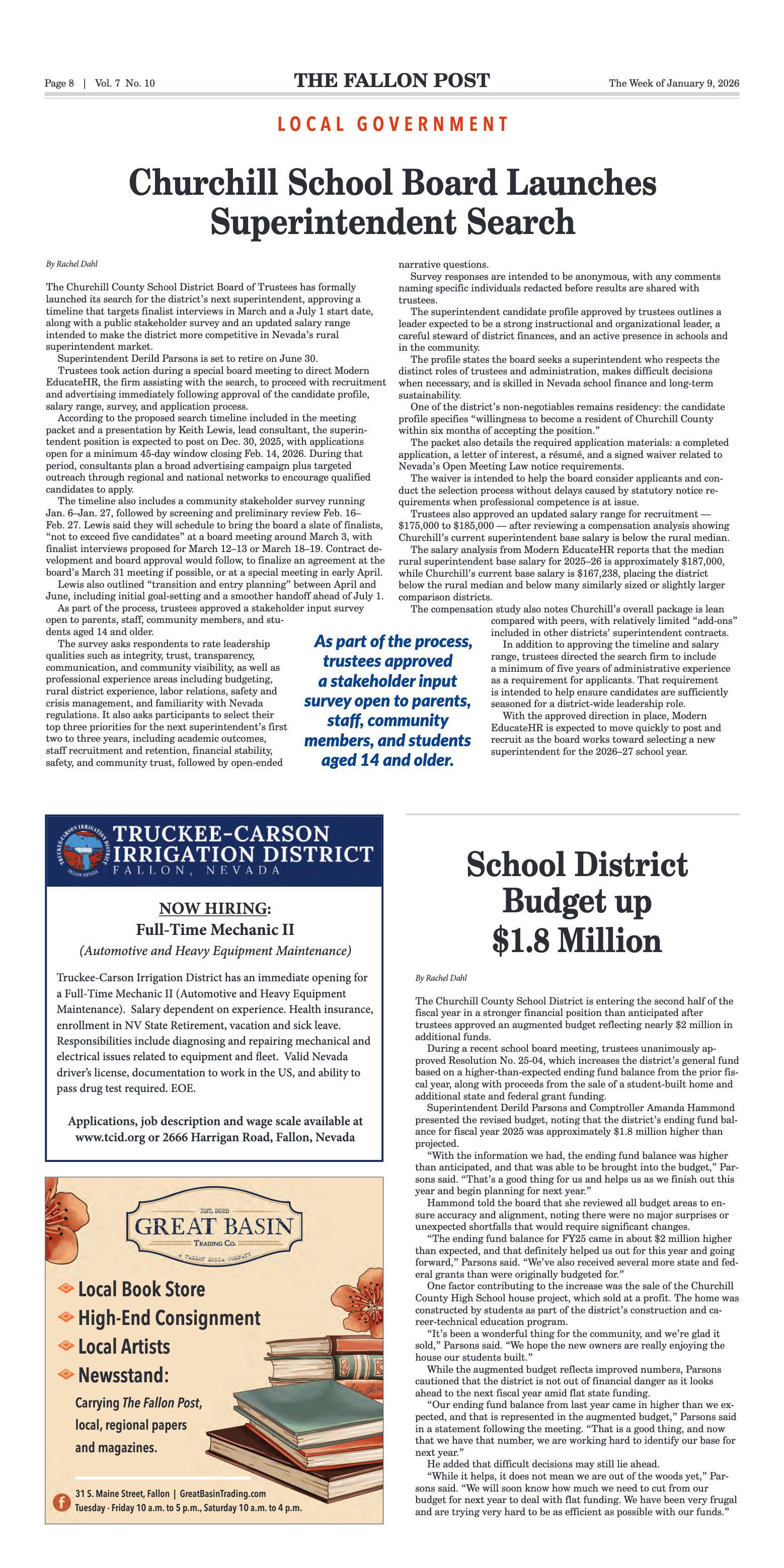
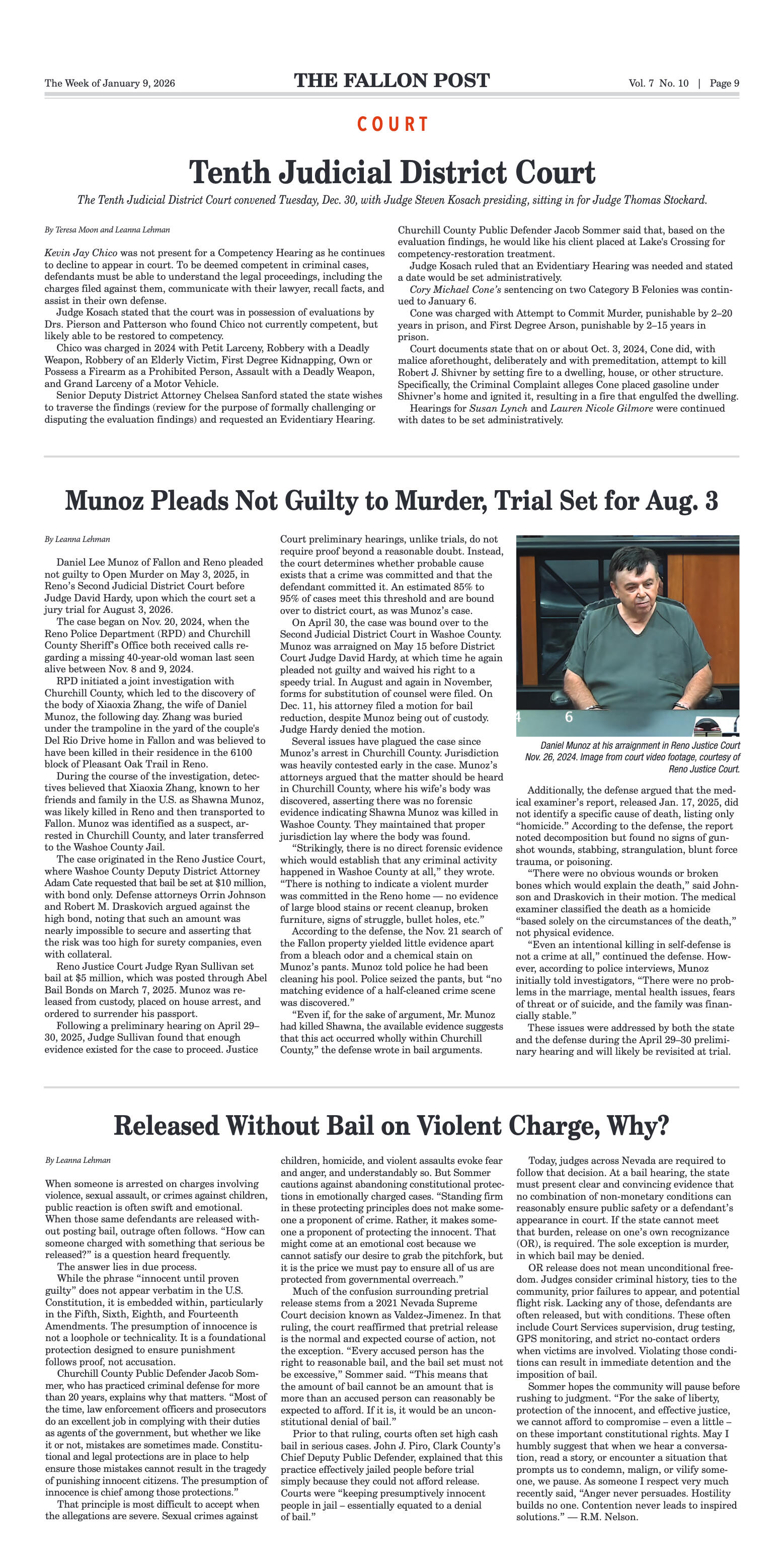
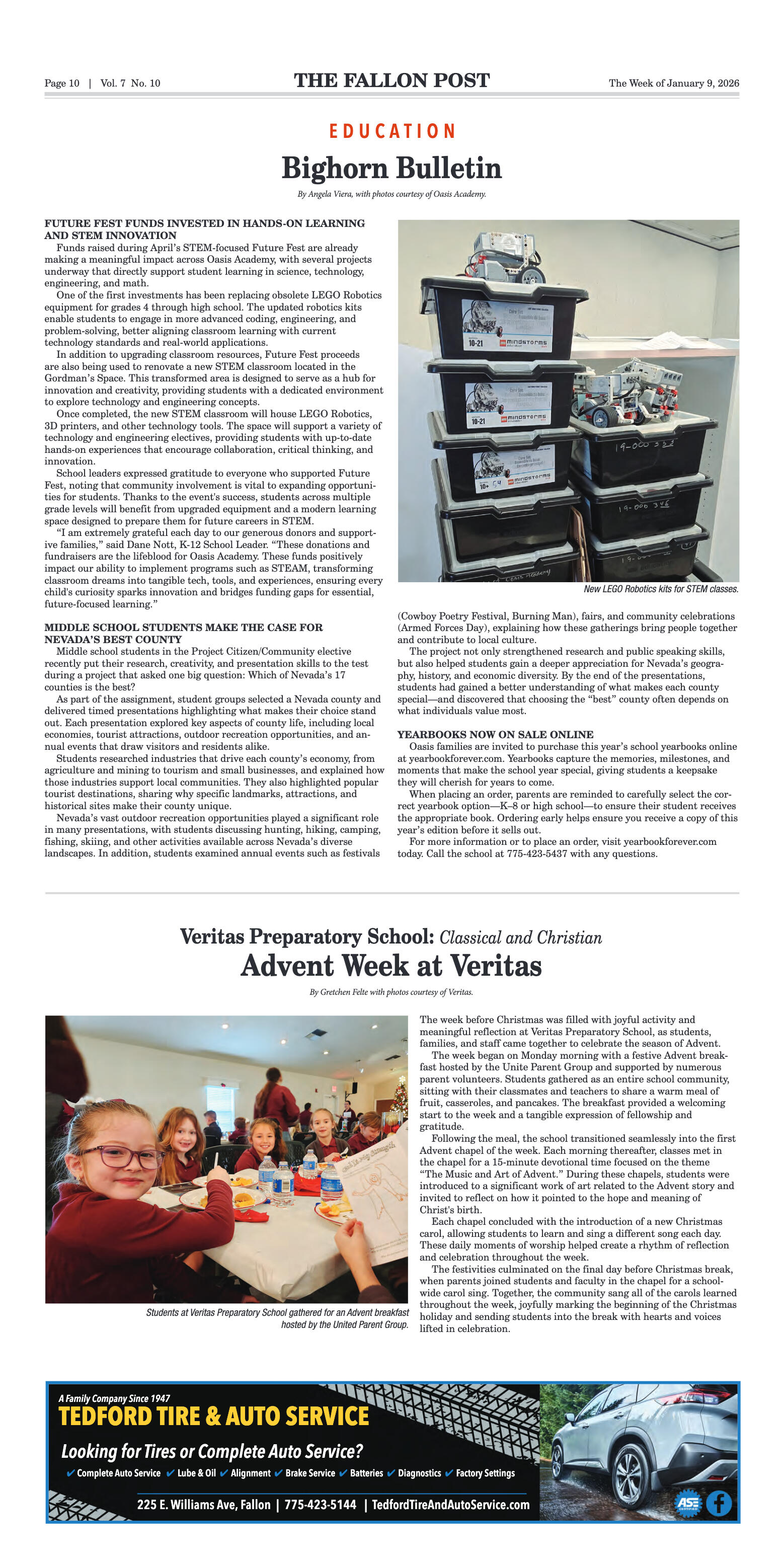
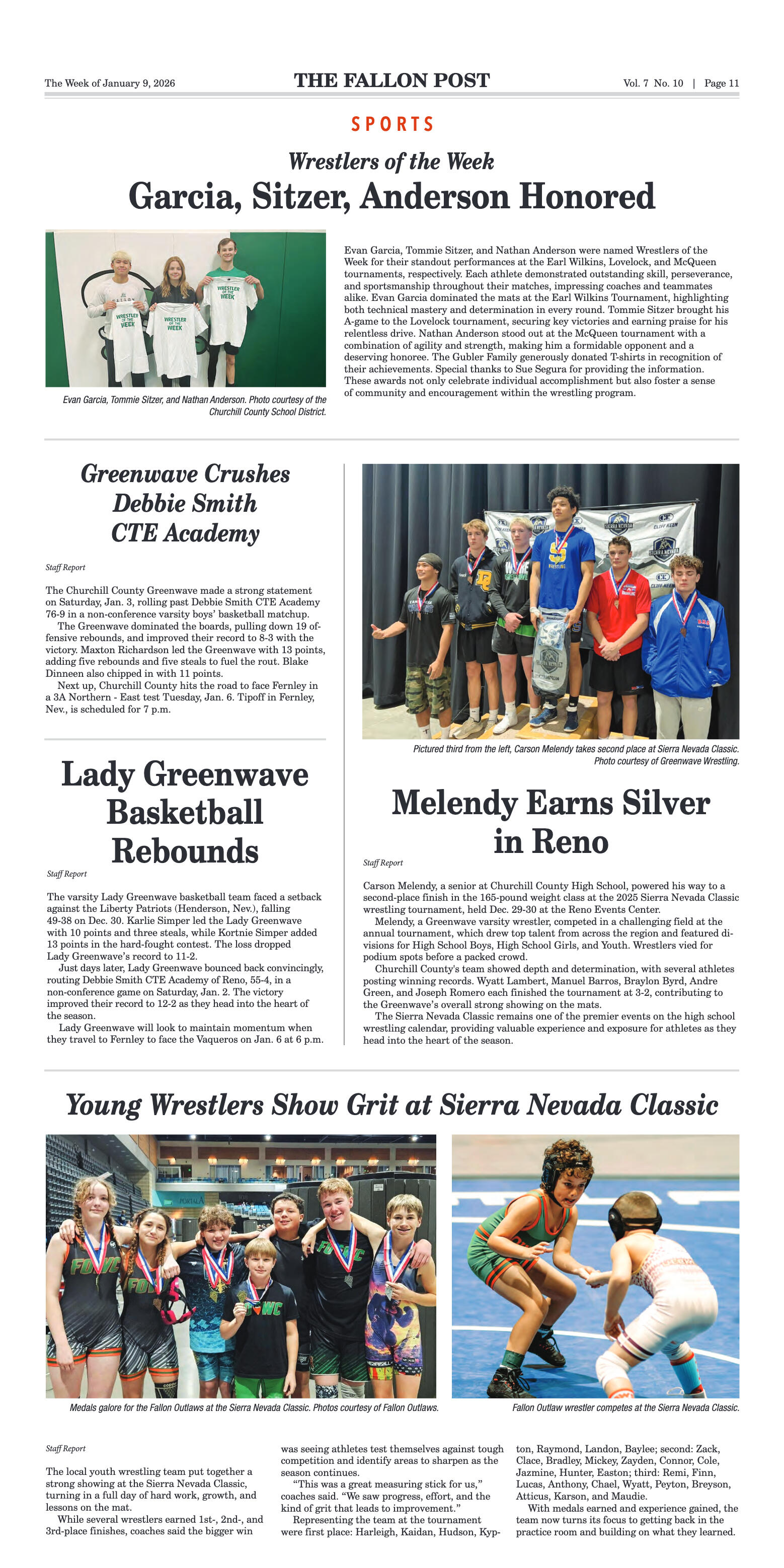
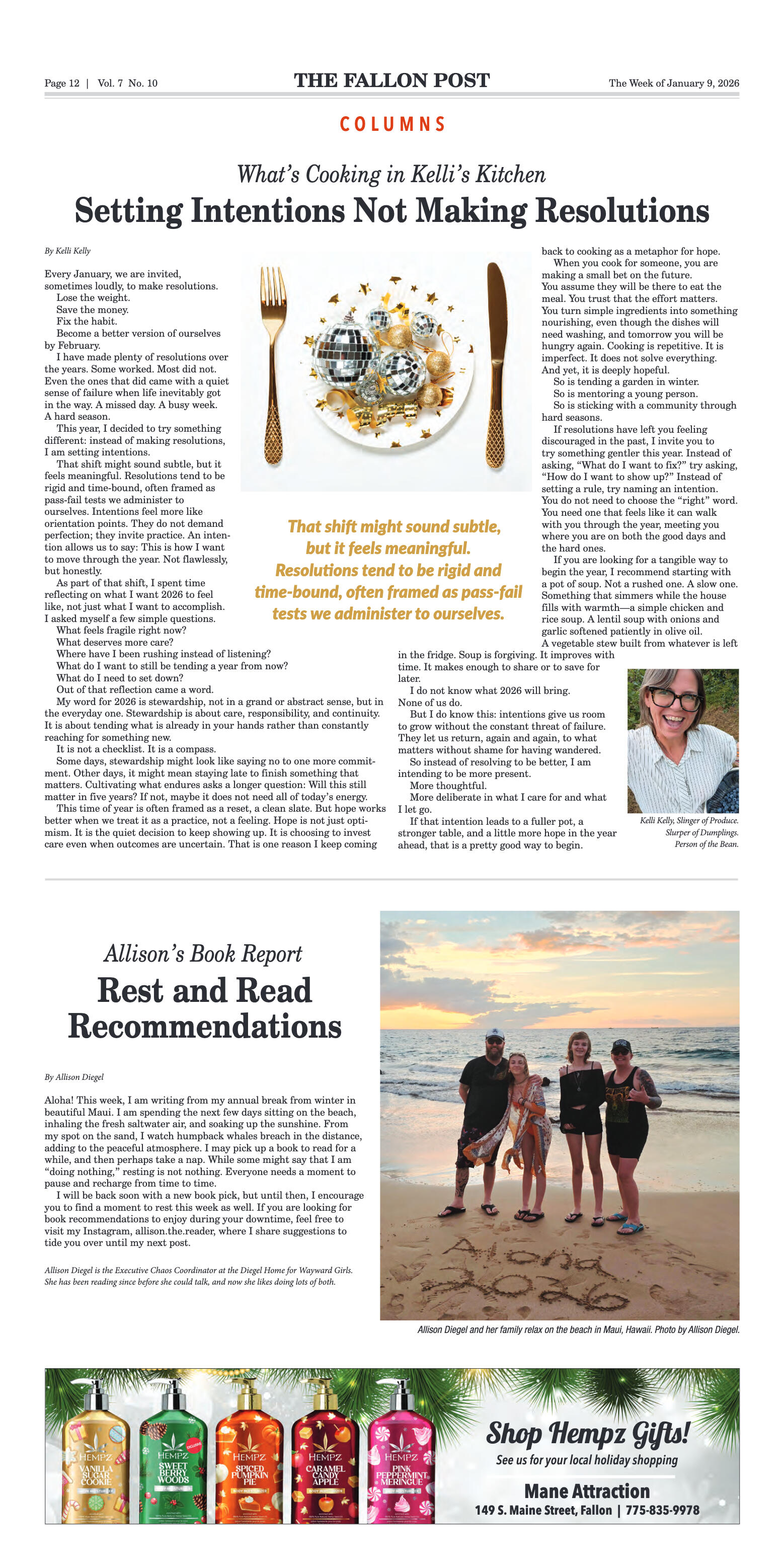

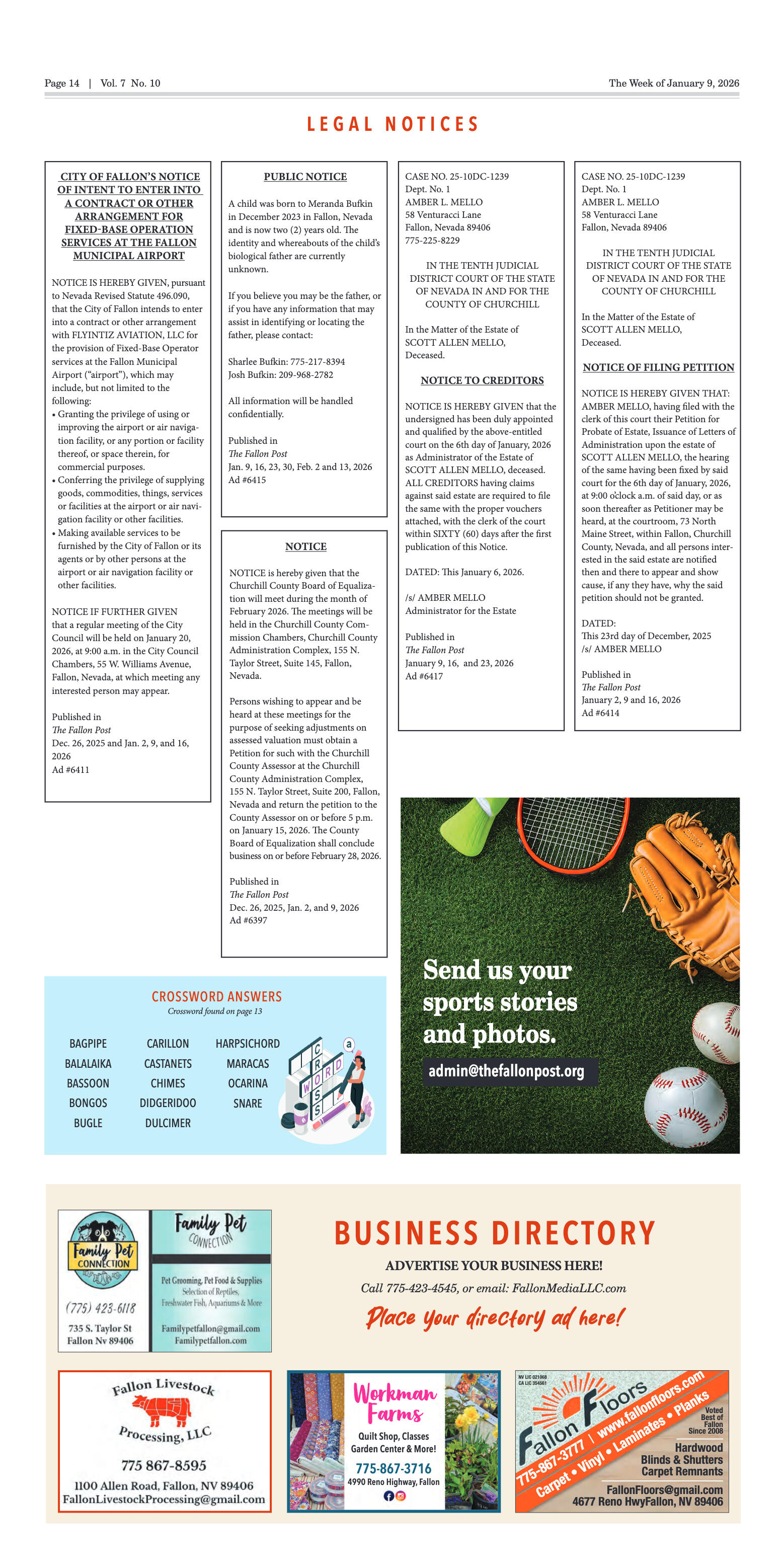




















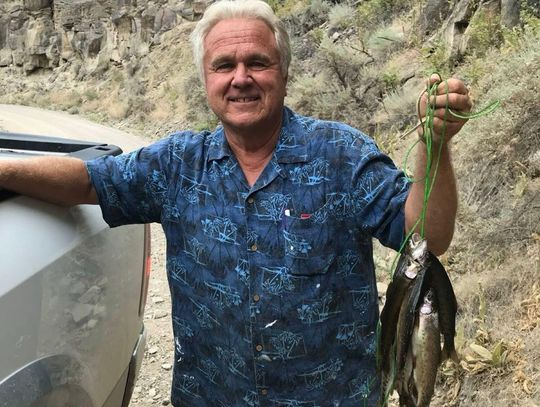



Comment
Comments